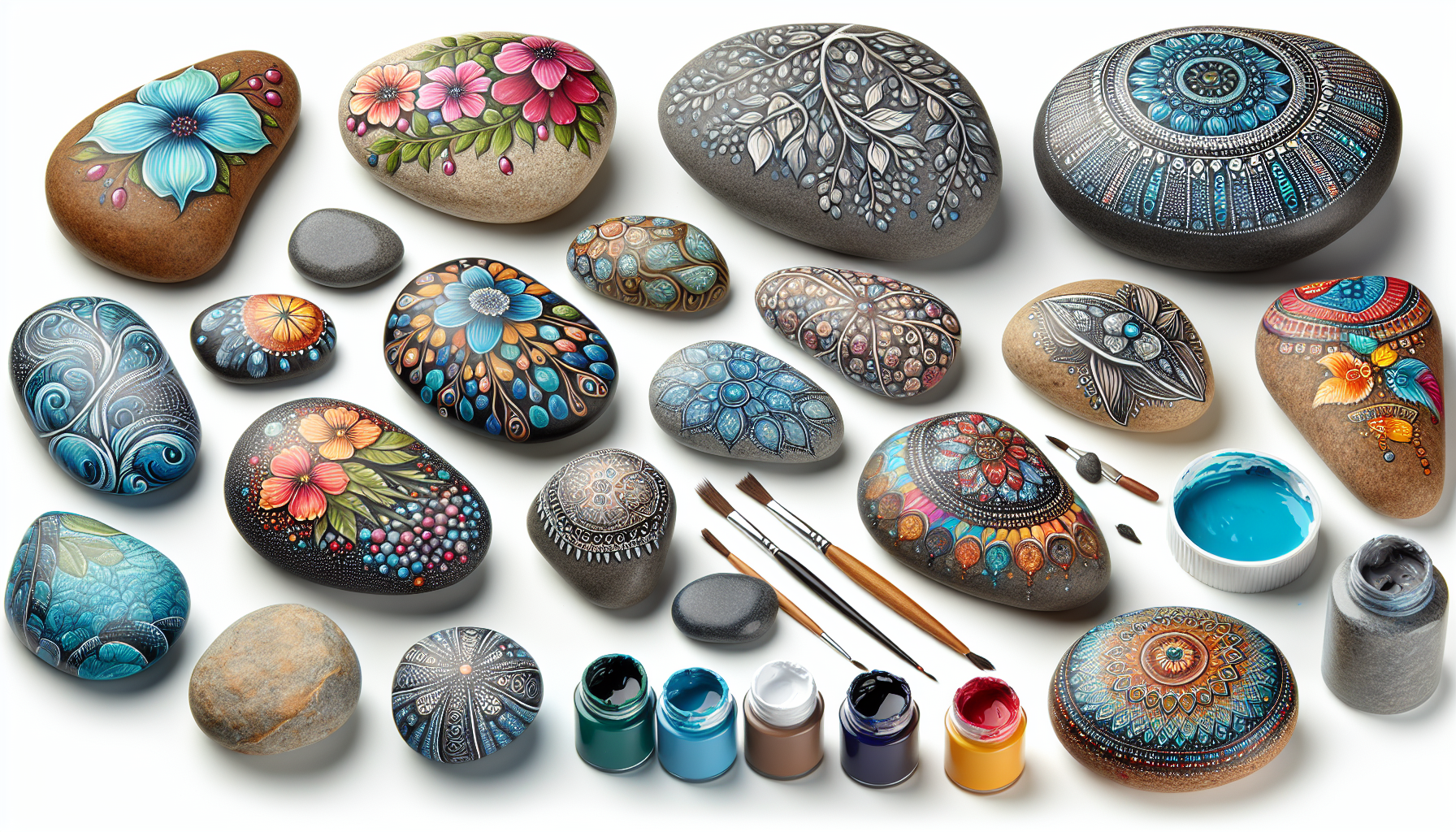Have you ever wondered if you can achieve the mesmerizing and vibrant effect of hydro dipping using acrylic paint? Well, you’re in luck! In this article, we will explore the possibilities of hydro dipping with acrylic paint and discover the exciting world of creating unique and eye-catching designs on various surfaces. Whether you’re a beginner or an experienced artist, get ready to unlock the magic of hydro dipping with acrylic paint and unleash your creativity like never before!

Overview
In recent years, hydro dipping has gained popularity as a fun and creative way to customize various objects. Whether you want to personalize your phone case, refresh the look of your kitchen appliances, or give a unique touch to your car interior, hydro dipping can be the perfect solution. This article will guide you through the world of hydro dipping with a specific focus on using acrylic paint. From understanding the process to preparing the paint and exploring different techniques, you will learn everything you need to know about hydro dipping with acrylic paint.
What is Hydro Dipping?
Hydro dipping, also known as water transfer printing, is a technique that allows you to apply intricate patterns and designs to objects using water and specialized inks or paints. The process involves submerging the object in a tank of water where a layer of paint or film sits on the surface. The design adheres to the object upon contact, creating a vibrant and seamless finish.
The Process of Hydro Dipping
Preparing the Object
Before you can start hydro dipping, proper preparation of the object is essential. Start by cleaning the surface to ensure there are no dust, dirt, or oils that could interfere with the adhesion of the paint. Smooth out any imperfections or rough edges as well. Additionally, consider masking off any areas that you don’t want to be covered in paint, such as buttons or hinges.
Choosing the Base Coat
The base coat serves as the foundation for your hydro dipping design, providing a solid color to enhance the overall appearance. When selecting a base coat, consider the color scheme and style you envision for your project. It’s important to choose a paint that is compatible with the material of your object, so do some research or consult with experts if you’re unsure.
Applying the Base Coat
Once you’ve chosen the base coat, it’s time to apply it to the object. Shake the can well and hold it approximately 6-8 inches away from the surface. Use smooth and even strokes to apply a thin and consistent layer of paint. Allow the base coat to dry completely before proceeding to the next step.
Preparing the Paint for Hydro Dipping
When it comes to hydro dipping with acrylic paint, preparation is key. Start by choosing the right acrylic paint for your project. Opt for high-quality paints that provide good coverage and adhere well to various surfaces. Consider the colors and shades you want to incorporate into your design.
Hydro Dipping Process
Fill a large container with warm water at a temperature around 70-90°F. Shake the acrylic paint bottles well and slowly pour the paint onto the water’s surface. The paint should spread and form a film. Use various tools, such as a comb or toothpick, to create patterns and swirls on the surface of the paint film. Once you’re satisfied with the design, carefully lower the object into the water, ensuring all surfaces contact the paint film. The paint will adhere to the object as it is submerged.
Rinsing and Drying the Object
After hydro dipping, remove the object from the water and gently rinse off any excess paint using clean water. Be cautious not to rub or scrub too vigorously, as this may cause the paint to smudge or peel off. Allow the object to dry completely before proceeding to the next step.
Applying a Clear Coat
To protect your hydro dipped design and give it a glossy finish, it’s recommended to apply a clear coat. This step not only adds durability but also enhances the colors and patterns. Choose a clear coat specifically designed for the material of your object, and follow the manufacturer’s instructions for application. Allow the clear coat to dry thoroughly before handling or using the object.
Can You Use Acrylic Paint for Hydro Dipping?
Yes, you can definitely use acrylic paint for hydro dipping. Acrylic paints are a popular choice for this technique due to their versatility, wide range of colors, and ease of use. They adhere well to various surfaces, including metal, plastic, wood, and more. Many hydro dippers prefer acrylic paint for its vibrant pigments and ability to create intricate designs.

Advantages of Using Acrylic Paint
Using acrylic paint for hydro dipping comes with several advantages. Firstly, acrylic paints are readily available in a vast array of colors, giving you endless possibilities for creativity. They also dry relatively quickly, allowing you to move through the hydro dipping process efficiently. Additionally, acrylic paints are water-based, making them non-toxic and easy to clean up. They also provide good coverage and adhere well to different materials, ensuring a long-lasting finish.
Disadvantages of Using Acrylic Paint
While acrylic paints offer many benefits for hydro dipping, there are a few disadvantages to consider. One drawback is that acrylic paints can sometimes dry too quickly on the water’s surface, making it challenging to create complex patterns or swirls. It may take some practice and experimentation to achieve the desired designs. Additionally, acrylic paint films can be more fragile and susceptible to damage compared to other types of hydro dipping paints. Therefore, proper care and handling are crucial to maintain the integrity of the design.

Techniques for Hydro Dipping with Acrylic Paint
Using Acrylic Paint Directly
One technique for hydro dipping with acrylic paint is to use the paint directly on the water’s surface. By creating patterns or designs with the paint bottles and various tools, you can achieve unique and intricate designs. This technique offers greater control over the final outcome, allowing you to experiment with different shapes, colors, and textures.
Creating a Hydro Dipping Film with Acrylic Paint
Another technique involves creating a hydro dipping film using acrylic paint. This method requires a hydro dipping transfer film, usually made of PVA or polyvinyl alcohol, that acts as a carrier for the paint. By applying acrylic paint onto the film, you can then transfer the design onto the object by submerging it in water. This technique allows for precise and detailed designs and is commonly used for intricate patterns or logos.
Preparing Acrylic Paint for Hydro Dipping
Choosing the Right Acrylic Paint
To ensure the best results, it’s important to choose the right acrylic paint for hydro dipping. Look for acrylic paints that have good pigmentation, coverage, and adherence properties. Consider the surface material of your object and choose paints that are compatible with it. Some paints may require a primer or additional preparation steps for certain materials, so be sure to read the manufacturer’s guidelines.
Thinning the Acrylic Paint
To achieve optimal results, it’s often necessary to thin down the acrylic paint before hydro dipping. This step helps the paint spread smoothly on the water’s surface and facilitates better adhesion to the object. Consult the paint manufacturer’s instructions for recommended thinning ratios, as they may vary depending on the brand and type of paint. Add water or a suitable thinning agent gradually until you achieve a consistency that allows the paint to flow smoothly.
Adding a Hydro Dipping Medium
To further enhance the hydro dipping process, you may consider adding a hydro dipping medium to the acrylic paint. Hydro dipping mediums are specifically formulated to improve the flow, adhesion, and durability of the paint during the hydro dipping process. These mediums can also help prevent the paint from drying too quickly on the water’s surface, allowing for more intricate designs. Follow the manufacturer’s instructions for adding the medium to your acrylic paint.

Tips for Successful Hydro Dipping with Acrylic Paint
Practice on Test Objects
If you’re new to hydro dipping with acrylic paint, it’s always wise to practice on test objects before diving into more significant projects. This allows you to experiment with different techniques, patterns, and colors without the fear of ruining a valuable item. By practicing, you’ll gain confidence and improve your skills, ensuring better results on your final projects.
Use Proper Safety Precautions
While hydro dipping with acrylic paint is a fun and creative activity, it’s important to prioritize safety. Always work in a well-ventilated area to avoid inhaling fumes. Wear gloves and goggles to protect your hands and eyes from potential splashes or spills. Follow the manufacturer’s instructions for proper use and disposal of paints and chemicals.
Experiment with Different Patterns and Techniques
One of the joys of hydro dipping with acrylic paint is the endless possibilities for creativity. Don’t be afraid to experiment with different patterns, techniques, and color combinations. Try different tools and objects for creating unique textures and designs. The more you experiment, the more you’ll discover your own personal style and create one-of-a-kind pieces.
Work in a Well-ventilated Area
Since the hydro dipping process involves working with paints and chemicals, it’s crucial to work in a well-ventilated area. Open windows, use fans, or work outdoors if possible to ensure proper air circulation. This helps reduce the risk of inhaling fumes and promotes a healthier working environment.
Ensure Proper Drying Time
Allowing sufficient drying time is crucial for a successful hydro dipping project. Rushing the drying process can lead to paint smudging, peeling, or uneven finishes. Follow the recommended drying times provided by the paint and clear coat manufacturers. It may take several hours or even days for the paint to fully cure, so be patient and give your project ample time to dry before handling or displaying it.
Conclusion
Hydro dipping with acrylic paint allows you to unleash your creativity and add a personal touch to various objects. With the right materials, techniques, and practice, you can achieve stunning and unique designs on anything from phone cases to car parts. Remember to properly prepare your objects, choose suitable base coats and acrylic paints, and apply a clear coat for added protection. By following the tips and techniques outlined in this article, you’ll be well on your way to becoming a hydro dipping expert using acrylic paint. So dive in and let your imagination run wild!




